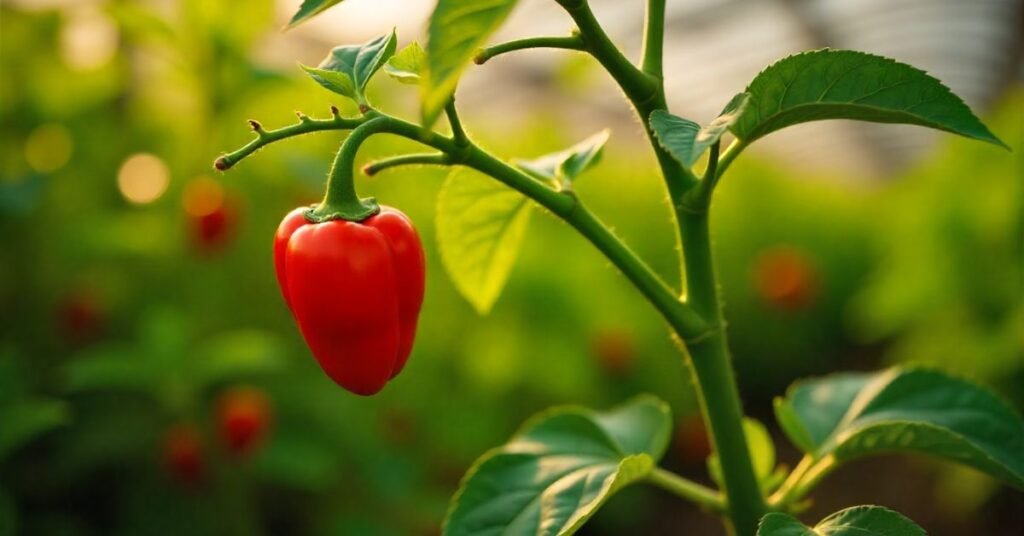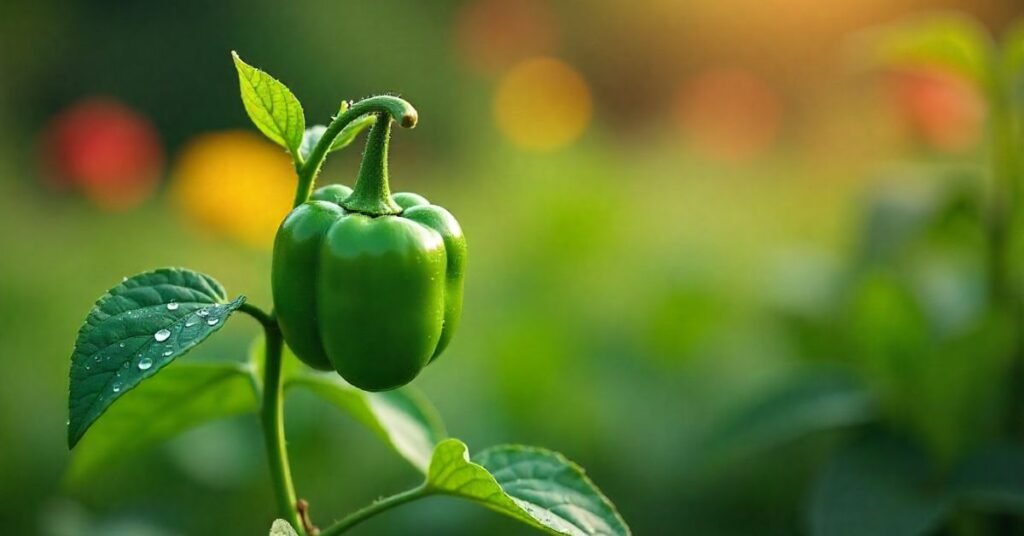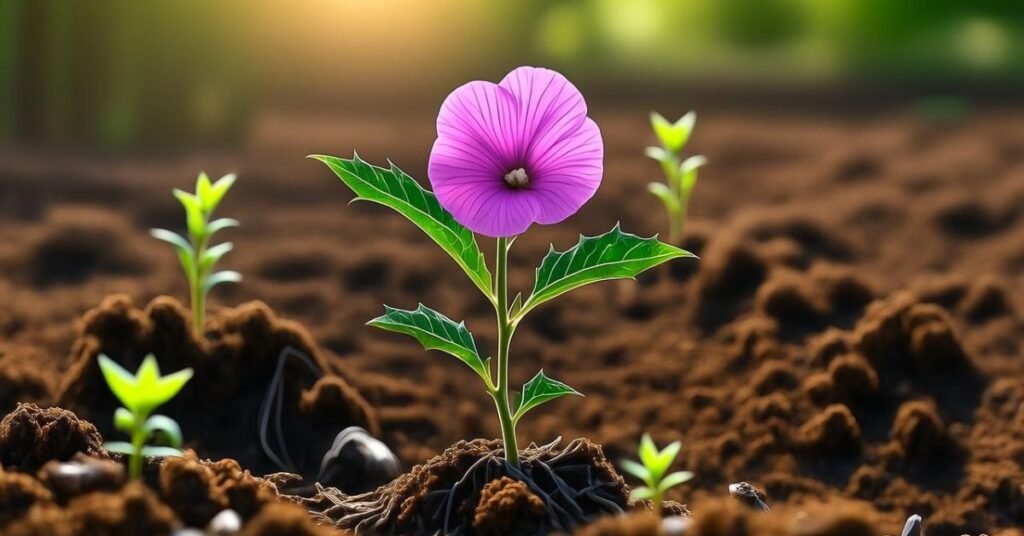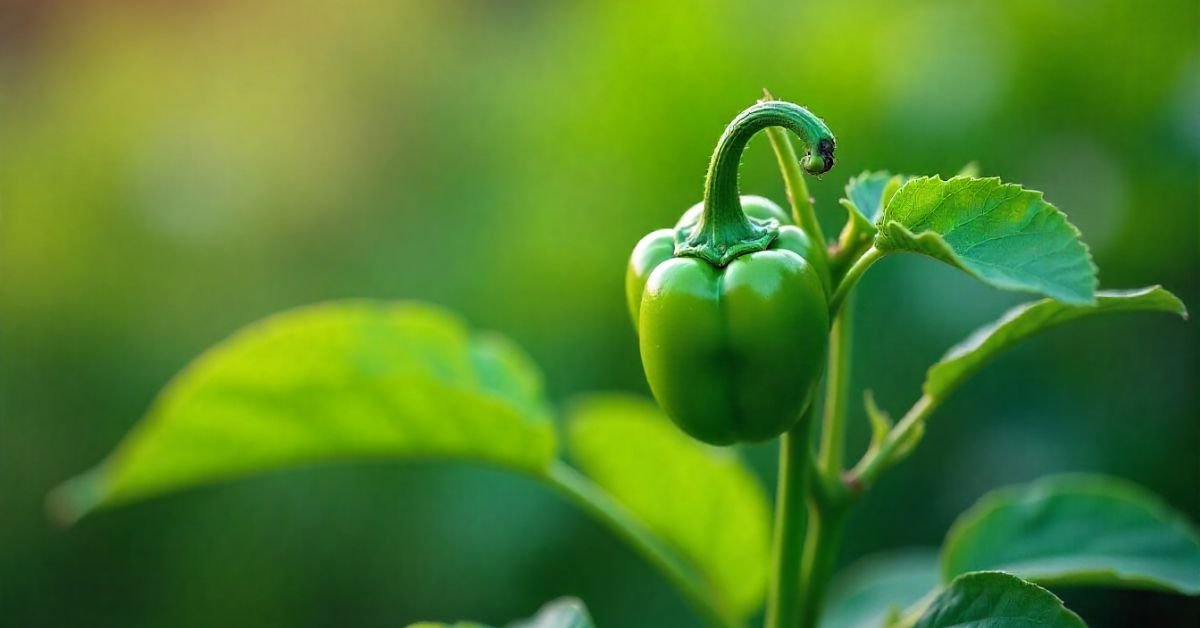Introduction
The Peter Pepper Plant is a famous hot chili variety known for its unusual shape. It produces small to medium pods that are bright red or orange when ripe. The plant grows well in warm climates and can reach a good height in pots or garden beds. Many gardeners grow it for both its heat and its striking look.
This pepper draws attention because it is not just spicy but also fun and unique. Gardeners enjoy showing it off as a conversation starter. Cooking lovers also use it to add heat and color to sauces, pickles, and fresh dishes. Its rare appearance and strong flavor make it a favorite among chili collectors.
If you want to try the Peter Pepper Plant in your garden, start with quality seeds from trusted sellers. It needs full sun, regular watering, and a warm growing season to thrive. With a little care, it will reward you with bold peppers that are perfect for spicy meals and garden display.
Growing Conditions for Peter Pepper Plant
To help your Peter Pepper plant thrive, you must provide the right combination of light, soil, temperature, water, and space.
Light and Location
Put your Peter Pepper in a place that gets full sun, meaning at least 6 to 8 hours of direct sunlight each day. Plants grown in less light tend to grow more foliage but produce fewer peppers, and fruit shape may suffer.

If you live in a climate with intense midday heat, some afternoon shade helps avoid leaf burn. If indoors, a bright window or grow lights will do. Make sure there is good air flow so leaves and fruit dry out after watering or rain.
Soil and Drainage
Peter Pepper plants prefer well draining soil. Soil that holds too much water will cause root rot and other diseases. Mix compost or organic matter to improve fertility and structure. A soil pH of around 6.0 to 7.0 (slightly acidic to neutral) works well. If using a pot, ensure there are drainage holes and that the potting mix contains good drainage material (e.g. perlite, vermiculite, coarse sand).
Temperature & Humidity
- Peter Pepper plants grow best in warm weather.
- Daytime temperature should stay between 70°F and 85°F (21°C–29°C).
- Nighttime temperature should not go below 60°F (15°C).
- Frost and cold winds can damage or kill the plant.
- Normal household or outdoor humidity works well for this plant.
- Avoid too much humidity with poor airflow to stop fungal diseases.
How to Plant and Grow Peter Pepper
This section will walk you through from seed to harvest for Peter Pepper plants.
Starting from Seeds
Start seeds indoors 6-8 weeks before your last expected frost. Use seed trays or small pots filled with a moist seed starting mix. Plant seeds about ¼ inch deep. Keep soil warm (around 25-30°C) until germination.
Once seedlings have a couple of true leaves, you can transplant them into larger pots or harden them off (gradually expose outside) over a week before moving outdoors. This helps avoid shock.
Transplanting & Spacing
When frost is past and temperatures are stable, transplant your Peter Pepper outdoors or put the pot where it will live long-term. Space plants are about 45-60 cm (about 18-24 inches) apart so there is room for branching and airflow. If growing in containers, use one plant per pot. The pot should be at least 30-35 cm (12–14 inches) in diameter and deep enough. Use a pot with good drainage.
Watering and Fertilizing
Keep soil evenly moist but not waterlogged. Water deeply when the top 1-2 inches of soil get dry. During hot spells, you may need more frequent watering. Avoid wet leaves, especially in the evenings.
Use a balanced fertilizer during growth (for example, one with equal N-P-K like 10-10-10), then when flowering begins, you can switch to a fertilizer richer in phosphorus to support fruiting. Organic compost is good too. Fertilize every few weeks.
Mulching helps retain soil moisture and reduce weeds. Organic mulch like straw or shredded leaves works well.
Pruning & Support
Pruning is not strictly necessary, but removing yellow or damaged leaves helps plant health. Pinch off early flowers (if you want the plant to establish stronger first) to allow better root and foliage growth before it starts fruiting. Support may be needed once the fruit gets heavy. You can use stakes or cages so branches don’t break under the weight.
Pest & Disease Management
Common pests include aphids, spider mites, and whiteflies. Inspect regularly. Use insecticidal soap or neem oil when needed. Good airflow helps prevent infestation. Diseases such as fungal infections (powdery mildew etc.) can happen if leaves remain wet or soil is too soggy. Avoid overhead watering and make sure spacing allows air to move between plants.
Harvesting
The peppers are usually ready to harvest about 75-90 days after planting depending on climate. Harvest when the fruit reaches full color (red, yellow or orange depending on variety) and is firm.
Cutting the fruit with scissors or pruning shears is better than pulling it off to avoid damaging the plant. If you harvest regularly, the plant tends to produce more. Leaving ripe fruit too long may slow the new fruit set.
Varieties, Uses & Fun Facts
While there are not many distinct “sub-varieties” of Peter Pepper, there are color variations (red, yellow, orange). The novelty shape is its main distinguishing feature.

Uses of Peter Peppers are both ornamental and culinary. You can use them fresh in salsas or sauces, dry them, or grind them. Their flavor is spicy with a mild sweet aftertaste typical of many heirloom chilis.
Because of the shape and rare status, some people grow them for display, seed saving, or conversation. They are also heirloom, meaning seeds saved tend to produce similar plants in subsequent generations.
Common Problems & Solutions
Here are some issues gardeners often face with Peter Pepper plants, and how to fix them.
Poor Fruit Shape
If peppers aren’t forming their characteristic shape, likely causes are immature fruit, inconsistent heat, or insufficient sunlight. Ensure full, warm sun and avoid cold nights. Also allow the plant to mature fully before judging fruit appearance.
Yellow Leaves
Yellowing often comes from overwatering, poor drainage, or nutrient deficiency (especially nitrogen). Test soil moisture properly. Improve drainage and use a gentle fertilizer. Remove affected leaves.
Cold or Frost Damage
Leaf drop or limpness often comes from cold snaps. In cooler climates, grow in containers you can bring indoors or use protective coverings. Avoid planting outside until nights are reliably warm.
Summary
To grow a thriving Peter Pepper plant, give it lots of light, warm temperatures, good soil, and consistent watering. Start seeds early, transplant carefully, guard against pests, and harvest at the right time. With proper care, you’ll get both beautiful peppers and satisfying heat.
FAQs
Q1: How spicy is the Peter Pepper plant?
A: It has a heat range of 10,000 to 23,000 Scoville units, hotter than jalapeños but milder than habaneros.
Q2: Can I grow Peter Pepper in pots?
A: Yes, it grows well in pots of at least 12 inches wide with good drainage and full sun.
Q3: How long does it take for Peter Pepper to mature?
A: The peppers are ready to harvest in about 75 to 90 days after planting.
Q4: Do Peter Pepper plants need a lot of sun?
A: Yes, they need 6 to 8 hours of direct sunlight every day to grow and produce fruit.
Q5: Are Peter Peppers only ornamental or edible too?
A: They are both ornamental and edible, often used in sauces, salsas, and for drying.


